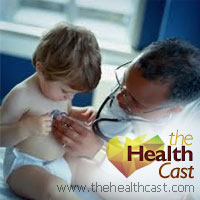
Here are some of the latest health and medical news developments, compiled by the editors of HealthDay:
FDA Cites Death Risk With Heart Drug
The U.S. Food and Drug Administration, joined by drug regulators in Europe, has issued safety warnings about the 2-year-old drug Multaq, approved to treat an abnormal heartbeat.
A recently halted 3,000-patient study of Multaq among people with atrial fibrillation showed twice as many deaths compared to those who didn’t take the drug, The New York Times reported. The study had been sponsored by the drug’s maker, Sanofi-Aventis, which cited “a significant increase in cardiovascular events,” the newspaper said.
Multaq was approved in 2009 to treat short-term heart rhythm abnormalities (arrhythmias) of less than six months. FDA records show at least 241,000 prescriptions written since then, the Times said.
Sanofi issued a statement saying the “benefit-risk profile remains positive” for the drug’s currently approved use.
The European Medicines Agency said it was reviewing the data and would offer additional direction in September, the newspaper reported.
—–
USDA Proposes Changes for Meat Additive Labeling
Meat producers would have to clearly specify which additives are added to raw meats and poultry under a rule proposed by the U.S. Department of Agriculture.
The department “wants consumers to know when there’s less chicken in their chicken,” reported the Associated Press.
Additives such as chicken broth, teriyaki sauce, salt or water would have to appear on the product’s label. The department said about 33 percent of raw poultry, 15 percent of raw beef and 90 percent of raw pork may contain additives. Ground beef would be exempt from the new rule, the wire service reported.
Current labels aren’t as visible or clear as the USDA would hope. The new rule would require that additives be part of the product’s title, as in “Chicken Breast – 40 Percent Added Solution of Water and Teriyaki Sauce,” the AP said.
Reaction among manufacturers was mixed. A spokesman for the National Chicken Council said his industry is divided on the issue. The American Meat Institute called the proposal “wasteful,” noting it would lead to a rise in meat prices, the AP reported.
—–
FDA Evaluating Some Osteoporosis Drugs for Possible Cancer Link
Studies on oral bisphosphonate drugs used to treat osteoporosis are being reviewed by the U.S. Food and Drug Administration, which is investigating whether there’s a link between the bone-disease medicines and an increased risk of esophageal cancer, the agency said Thursday.
The FDA, citing “conflicting findings” from past studies, said it hasn’t found proof of a link between the drugs and esophageal cancer. But the agency said in a news release that it would “continue to evaluate all available data supporting the safety and effectiveness of bisphosphonate drugs and will update the public when more information becomes available.”
The U.S. National Institutes of Health says more than 40 million women in the United States have osteoporosis “or are at high risk due to low bone mass.”
People taking a bisphosphonate who develop symptoms including “swallowing difficulties, chest pain, new or worsening heartburn, or have trouble or pain when swallowing” should contact a physician, the FDA advised. Candidates for these drugs also should speak with a doctor “about the benefits and risks of taking oral bisphosphonates and how long they should expect to take them,” the agency added.
—–
Gay Men With HIV at Increased Risk of Hepatitis C
While it’s considered rare to acquire the hepatitis C virus via sexual intercourse, a new study finds that gay men infected with HIV who have unprotected sex are at increased risk of transmitting hepatitis C, the U.S. Centers for Disease Control and Prevention said Thursday, citing a new study.
In the agency’s Morbidity and Mortality Weekly Report, CDC researchers working with scientists from the Mount Sinai School of Medicine said they uncovered “substantial evidence” of hepatitis C transmission during unprotected gay sex. Hepatitis C primarily is transmitted through exposure to blood and by drug users who share needles.
The researchers said that between 2005 and 2010, they found 74 men infected with HIV — the virus that causes AIDS — who had documented new infection with hepatitis C. These men reported no other risk factor for hepatitis C infection.
But when compared with other gay men who were HIV-positive but hadn’t contracted hepatitis C, the men with recent hepatitis C infection were 23 times more likely than the other group to have had unprotected anal sex, the study found.
“The good news,” wrote the researchers, “is that the cure rate for new [hepatitis C] infection is very high with early treatment, but without regular testing of the men at risk, these largely asymptomatic infections may be missed.”

